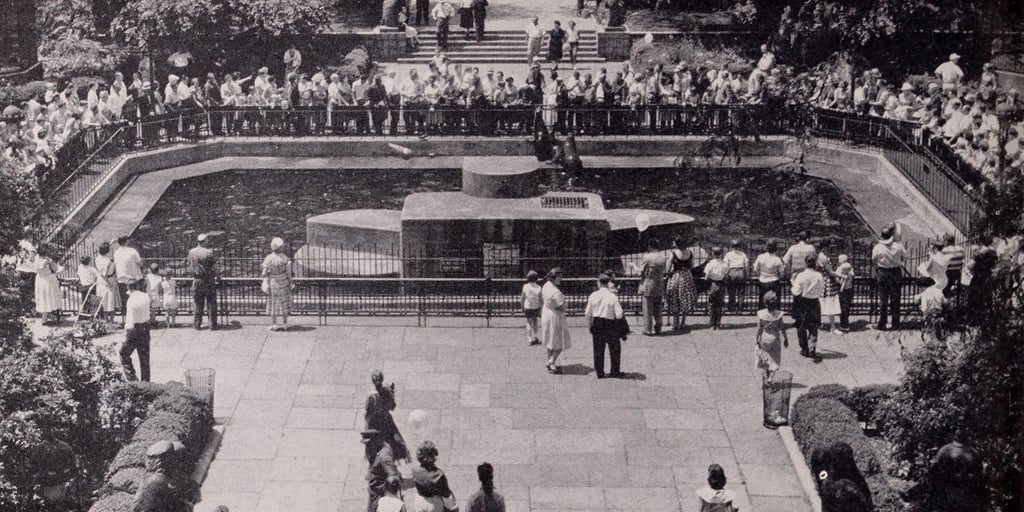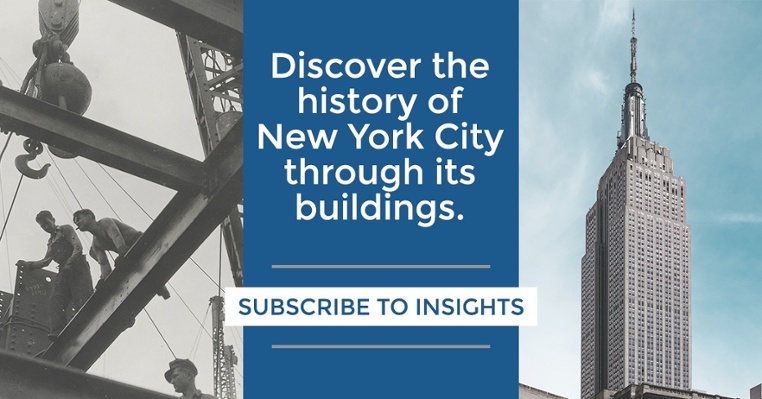The notion of a public park in New York City began with local wealthy merchants and landowners who urged city officials to create a public space comparable to those in London and Paris. They wanted to establish the city’s international reputation and provide working-class New Yorkers a “healthy alternation to the saloon.”
The Early Years
After 3 years of debate, the state legislature authorized the City of New York to use eminent domain powers to acquire acreage in the center of Manhattan in 1853. 750 acres between 5th and 8th Avenues and 59th and 106th Streets seemed to be the most viable option because the swamps, bluffs, and rocky outcroppings made the land undesirable for private development. Unfortunately, the City’s exercise of eminent domain to acquire this land resulted in the displacement of 1,600 residents, including pig farmers, gardeners, and African-American residents of Seneca Village. Three churches and a school, around 8th Avenue and 82nd Street also were displaced.
Once acquired, the question of political control over the Park became a contentious issue. The Republican-dominated state legislature did not favor “home rule.” The Republicans didn’t want the Democratic office-holders of the City to have control over the park. So, in 1857, the state legislature appointed the first Central Park Commission under Andrew Green to oversee the layout of uptown Manhattan and management of the park. The Central Park Commission was the city’s first planning agency. Not until 1870 did a new city charter restore home rule and local control of the park to mayoral appointees.
As a result of the country’s first design competition that the commission held to determine the layout of the Park, Frederick Law Olmstead, a Connecticut-born journalist, and British architect, Calvert Vaux, were selected for their design called the “Greensward Plan.” The plan proposed sweeping meadows and ponds that would appear to be “limitless” amidst the large urban setting around it including pastoral elements such as woodlands, dense plantings, natural-looking caves, grottos, and streams with cascading water. Olmstead and Vaux thought of Central Park as an antidote to the congestion and crowded conditions of the surrounding city. They also desired it to be a social gathering place. To that end, Central Park would offer spaces for music and the visual arts, passive recreation like sketching and bird watching, and active sports such as boating, ice skating, baseball, tennis, and croquet, and an outdoor classroom for the study of botany. A 6-mile long, elm-lined promenade acted as a buffer between New York City and the park, and Bethesda Terrace, a two-tiered esplanade with a sculptural fountain, would offer additional pleasing aesthetics. American artist, Emma Stebbins, eventually received the commission to sculpt the fountain that became known as the Angel of the Waters.
The plan also envisaged a system of intertwined roads, 28 miles of pedestrian walkways, six miles of equestrian and carriage paths and a separate bridle path exclusively for horseback riding. A series of ornamental bridges separated walkways from the carriage and horse paths for quiet strolling. The specifications for the design competition required at least four roads that would crisscross the park and be open to city traffic. Olmstead and Vaux cleverly created below grade roads on 65th, 79th, 86th, and 96th streets to meet this requirement. Their design camouflaged the roads behind dense vegetation.
The construction of the Park was a massive undertaking. Over 20,000 workers were involved in creating the pastoral landscape. They removed 3 million cubic yards of soil, planted more than 270,000 trees and shrubs, and built an additional reservoir. The park opened in the winter of 1859 and immediately drew thousands of people to skate on the frozen lakes that were once swamps. In 1863 the boundaries of the park would be extended to 110th Street to total the 843 acres. By 1865, the park was drawing 2 million visitors each year. Initially, the rules governing the park were strict. They prohibited group picnics, commercial vehicles for family drives through the park, and ball playing without a note from the school principal. Gradually these rules gave way to more democratic uses: concerts on Sundays, a carousel, goat rides, tennis on the lawns, and bicycling on the roads.
Central Park in the 20th Century
By the early 20th Century, the park was in serious decline due the social, political, and economic climate. Mayor Fiorello LaGuardia appointed Robert Moses Commissioner of Parks to do something about it. Moses secured federal funding from the New Deal Works Progress Administration to restore many of the eroded landscapes and crumbling structures. In addition, he embarked on a public information campaign to educate visitors about their park stewardship responsibilities. When he left office in 1964, however, there was no management strategy for maintaining the improvements or continuing the public information campaign.
As a result, Central Park experienced a second decline. By 1970, meadows in the Park had become barren, benches, lights and playground equipment were broken and the infrastructure was crumbling. Refuse, graffiti, and vandalism were common sights. The public began to perceive the Park to be a lawless and dangerous place. It seemed that the city had all but abandoned its responsibility even though there were over 300 Parks Department employees assigned to work there. Media coverage of the decaying Central Park portrayed it as a national disgrace.
In 1974, some members of the Central Park Community Fund persuaded the fund to underwrite a management study of the park by E.S. Savas, a professor of public systems management at Columbia University. The study proposed that a chief executive officer have “clear and unambiguous managerial authority” for all park operations and that a “board of guardians” be created to oversee planning and strategy. The first proposal resulted in the appointment of Elizabeth Rodgers as Central Park Administrator in 1979. Four years prior to this appointment, Rodgers had overseen the park’s task force for summer youth interns.
Rodgers devised and developed a ground-breaking public-private partnership with the support of Parks Commissioner, Gordon Davis. Under a master plan, the two most prominent private advocacy groups – the Central Park Task Force and the Central Park Community Fund – merged to become the Central Park Conservancy (which was, in essence, the Board of Guardians that Savas proposed). As the conservancy embarked upon the restoration, many more private individuals, foundations, and corporations provided funding for the effort. In fact, because of these donations, the conservancy was able to establish an endowment to sustain Central Park’s future.
The restoration continued from 1987 to 2008. In 1998, Douglas Blonsky succeeded Rodgers as Central Park Administrator, and then took on the additional role of President and CEO of the conservancy in 2004. At that point, Blonsky was responsible for the park’s management and all fundraising and administrative duties. He had a clear vision for a well-run park. His innovative “zone management system” brought accountability, pride, and success measures to the Parks Department. That system divided the park into 49 zones, each headed by a gardener who, in turn, supervised a grounds crew. Through his efforts, the restorations gradually brought social changes in public behavior that returned the sanctity of Central Park. For example, the conservancy was first to adopt a zero tolerance policy for garbage and graffiti.
In 2016, the conservancy launched the ten-year campaign, Forever Green, to restore and preserve Olmsted and Vaux’s vision of Central Park. The goal of Forever Green is to raise $300 million to enable long-term planning for the entire park, its woodlands, historically and architecturally significant structures, and playgrounds. Just as Central Park was the birthplace of the urban park movement in the United States, it is leading the rebirth of urban parks through the Central Park Conservancy Institute for Urban Parks.
.jpg?width=1024&name=central-park-zoo_3%20(1).jpg)
The Central Park Zoo
The history of Central Park would not be complete without including the Central Park Zoo. Though Olmsted and Vaux’s plan did not include a zoo, the park began to house animals in the late 1850s, with the first known to be a bear entrusted to the care of a park messenger boy. City commissioners responded to the growing ad hoc collection of animals by petitioning the state legislature to set aside a portion of the park for a “zoological garden,” which it did in 1861. Construction of structures to house the animals continued through the 1860s and into the 1880s. During this period, the Menagerie became the scene of many rare wildlife births that contributed to rising annual attendance that reached a million by 1902.
The Menagerie came under the oversight of the New York Zoological Society in the 1890s. The Society operated under a special charter granted by the state legislature to create a public zoological park, to protect animals and to promote the science of zoology. Once the society had control, construction of additional permanent buildings began immediately. In 1934, Commissioner of Parks, Robert Moses, remodeled the Menagerie and changed the name to the Central Park Zoo.
Like the restoration of the park at the time, funding for restoring the zoo came from the Works Progress Administration. Once complete, the zoo was the model for others of the time. However, over the next 40 years or so, the facilities became inadequate for the animal population. So, in April 1980, the City contracted with the Wildlife Conservation Society (formerly the New York Zoological Society) to renovate and operate the zoo for the Department of Parks and Recreation. New construction began in 1985, and on August 8, 1988, the new Central Park Zoo opened to record crowds. It continues to be one of the most popular attractions in the city.
Undoubtedly, the future of Central Park will continue to be shaped by the people who use it. With sustained popularity and good stewardship, the Park will remain an iconic symbol of the City, the State of New York and America.








